Since we began writing about COVID-19 vaccines almost two months ago, problems that loomed large in the early going have eased while others have emerged as key obstacles to the goal of vaccinating all adults.
When we last looked at the vaccine picture, we emphasized some paradoxical differences between states, with poor rural states having more success at administering vaccines than wealthy urban states. Since early January some of these differences have narrowed. As we expected, ranking states and publicizing differences between them is a tried and true strategy for getting the laggards to raise their game, as the graph below illustrates.
The blue line indicates the median efficiency rate for states (the number of vaccines that actually made it into people’s arms) over the period for which CDC has been releasing data. In the past two months states have done a better job of using their vaccines or not holding onto their supply. The green line indicates the difference between the best and worst states during the past two months. The fact that this line is going down, while the median goes up, is an indication that states are converging—and most likely learning from each other.
Now we appear to be in a new stage, one that all the states are confronting and what management experts call “the last mile” problem. This term, first used in telecommunications economics, referred to the fact that the last mile—for delivering copper wire to homes for land lines, for example—was the most difficult and most expensive. The problem is similar for vaccine distribution.
Although there are plans for FEMA to give out some vaccines at mass vaccination sites, the reality is that most of the vaccines will be administered at the state and local level. While it is clear that states are improving, the pressure on them to expand the number of sites to accommodate the demand will grow exponentially. There are two problems here: technology and equity.
The technology problem is getting an appointment, which is difficult unless you have a computer, search skills, and a lot of time. In addition, the appointment sites have been built state by state, sometimes locality by locality, and suffer from a wide variety of problems common to poor website design. They often crash when a new group becomes eligible and tries to sign on all at once, even though this is a problem that could be anticipated. Some sites make you input the same information over and over again. Others are designed so that the “next” button isn’t visible on the bottom of a phone screen. The technology problems are even worse for people in low income and minority communities.
The second “last mile” problem has to do with the way states have prioritized their rollout of the vaccine. No one disagreed with prioritizing the first eligible group, health care providers on the front lines of the pandemic. And no one complained very much about the second group, the very old and frail people in nursing homes since that was the one population that accounted for 35% of all deaths. But now that we are into the larger population, equity issues are coming front and center, especially around the issue of race. Newspapers around the country are filled with stories of vaccination sites in African-American neighborhoods where the people in line are largely white Americans from the suburbs—despite the fact that Blacks are twice as likely to die from COVID-19. Mass vaccination sites like Gillette Stadium outside of Boston have been successful at increasing the state’s overall numbers, but you need a car and the ability to take some time off from work to get there.
What is more important, vaccinating a wealthy 70-year-old who lives in a large house and is either retired or can work from home and is likely to be white, or a 40-year-old grocery store clerk who lives in a small apartment with others, who has to go to work on public transportation and who is likely to be African-American or Latino? To the extent that vaccinations are held for the elderly, they are delayed for front line workers and vice versa.
Answering these questions is difficult because of the complex tradeoffs they involve. Writing recently in the journal Science, the authors, Kate Barber and her colleagues, modeled different types of vaccine prioritization and concluded that vaccinating 20–49 year-olds minimized the cumulative incidence of the virus in the community but did nothing about death rates, while vaccinating the elderly (over 60) reduced death rates but didn’t necessarily reduce the incidence of the disease in the community.[1]
The race and age issue is complicated by the fact that the elderly population is much whiter than the younger population. The following graph from Pew looks at the age distribution in the United States by age. The most common age for whites is 58 years while the most common age for Hispanics is 11 years and for African Americans it is 27 years. Because the elderly have been given priority, it is not surprising that more whites have been vaccinated than Blacks.

This does not mean that there are no equity issues. Are the white and Black elderly being vaccinated at the same rate? We cannot answer the question definitively because only two states, South Carolina and Washington, report data on vaccinations by both race and age. But in those states, we do find evidence of inequality. According to the Kaiser Family Foundation, in South Carolina, “37% of White adults ages 65 and older have received at least one dose as compared to 28% of Black adults ages 65 and older. In Washington State, 23% of all White adults 65 and older have received at least one dose of the vaccine, but only 16% of Black older adults and 19% of Hispanic older adults have been vaccinated.” However, according to one survey older African-Americans are more willing to get vaccinated than younger ones although suspicion and access problems remain.
According to a report by Rashawn Ray and his colleagues on the city of Detroit, where vaccine distrust has been shown to play a role in discouraging people from getting vaccinated, the role of community based, trusted messengers is essential.
Although there is little hard data on this topic, states are becoming increasingly sensitive to the racial and ethnic disparities in vaccination rates. Alabama, Nevada and Virginia are developing plans to deal with the problem. Others such as California, Ohio and Vermont have announced new vaccination sites in the hardest hit communities, which also tend to be communities of color. The District of Columbia and some counties in Maryland and New York have prioritized vaccine distribution to zip codes which have been hardest hit by the virus. Dallas, Texas tried this prioritization but was told by the state that they would not receive any more doses unless they reversed their decision. New Mexico developed a “social vulnerability index” component to their vaccine distribution. And New Hampshire and Rhode Island have set aside a percentage of their vaccines for places based on race.
As the amount of vaccine the federal government sends to the states increases during the next two months and supply shortages ease, expect the last mile problems and equity issues to take center-stage.
[1] Kate M. Bubar, Kyle Reinholt, Stephen M. Kissler, Marc Lipsitch, Sarah Cobey, Yonatan H. Grad, Dainel B. Larremore. Science, 26, February 2021, Vol 371, Issue 6532, pp. 916-921.
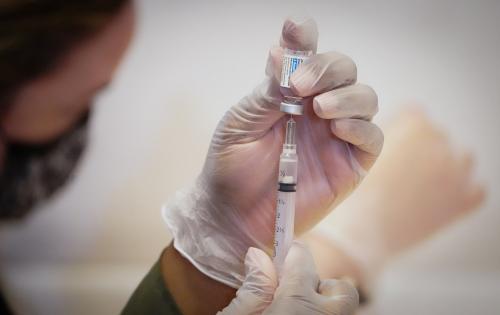
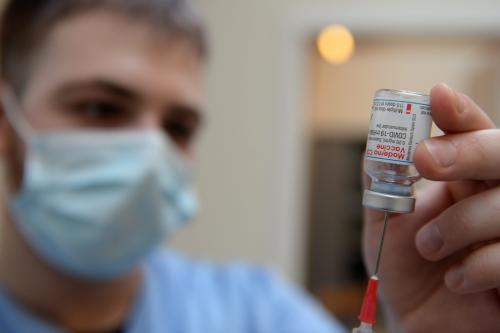
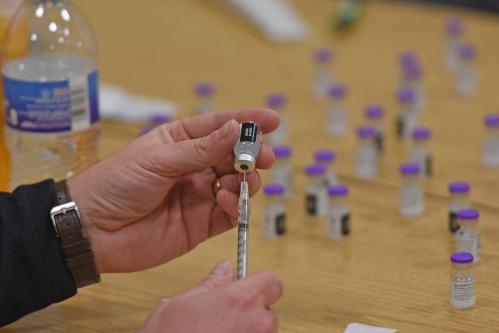



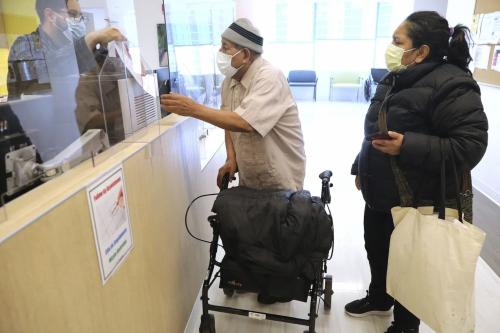
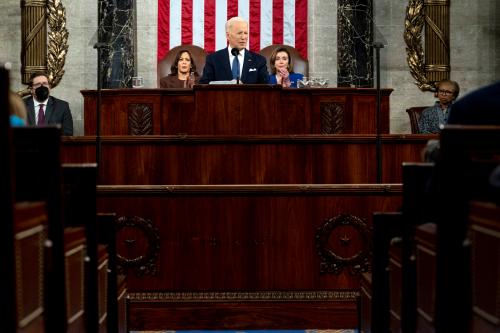
Commentary
Getting the COVID-19 vaccine: Progress, and equity questions for the next phase
March 4, 2021